The African baobab (Adansonia digitata) is a true wonder of nature. Just imagine: the trunk of this deciduous tree can reach over 10 meters (33 feet) in diameter and store hundreds of thousands of liters (tens of thousands of gallons) of water, allowing it to survive in the harsh conditions of the arid savannah. It’s also one of the few trees on Earth that can live for more than 2,000 years. In local legends, it's called “the upside-down tree”— a fitting nickname, as its wide, sprawling branches truly resemble roots reaching up into the sky.
“You, faithful baobab, confidante, home, fortress, source of water, medicine chest, honey tree, my refuge, my last shelter... You protect me. I bow to you.” — A freely translated quote from Afrikaans, taken from the novella The Expedition to the Baobab Tree by South African writer Wilma Stockenström. The story follows an enslaved woman who finds refuge inside a massive tree.
The baobab, also known as Adansonia, can be found in Madagascar, Africa, Australia, and even some parts of Asia, where humans introduced it. However, genomic research has confirmed that the genus originated in Madagascar. There are eight known baobab species in nature — six are endemic to Madagascar, one is native to Australia, and one to mainland Africa. It’s the African species we’ll focus on here.
What does the African baobab look like?
Typically, baobab trees grow individually, isolated from other baobabs. Their appearance is so unusual that they are hard to mistake for anything else — they look nothing like most trees we’re familiar with.
Baobab trunk
Massive, with a wide, reinforced base, it can reach 10–14 meters (33–46 feet) in diameter. Typically, it consists of several trunks fused together around a hollow center. The cavity forms due to rot and decay of the inner wood. In some cases, the hollow space is the result of multiple trunks merging in a circular formation from the roots. The bark is usually gray-brown and relatively smooth.
Baobab bark fibers are commonly used to make ropes, baskets, fabrics, and even strings for musical instruments. Most trees would die if their bark were stripped from the lower trunk, but not the baobab — it can regenerate its bark without harm.
Baobab leaves
Baobabs shed their leaves during the dry season and remain bare for about eight months each year. Interestingly, during this time, the trunk’s diameter often shrinks by 2–3 cm (0.8–1.2 inches) as water levels inside the tree drop by around 10%.
Baobab flowers
Baobabs are not only deciduous but also flowering trees. Their large, round blossoms (10–20 cm or 4–8 inches across) can appear in both dry and wet seasons. The soft white petals are about 8 cm (3 inches) long and wide. The flowers open at dusk, revealing a cluster of stamens, and remain open until dawn.
They emit a strong, sweet scent to attract animals and birds, which are the tree’s main pollinators. However, the entire flowering process lasts just one night. By morning, the flowers wilt and the fragrance turns into a sharp, putrid odor. The next blooming occurs one year later.
What is special about the baobab tree?
The baobab, or the “upside-down tree,” is one of the longest-living on the planet. In the regions where it grows, locals treasure baobabs as a source of food, raw materials, and shelter from rain and storms.
To better understand how extraordinary these trees are, let’s look at their unique features:
Baobabs are living water tanks
Baobab bark has a sponge-like structure that absorbs and stores large amounts of water during the rainy season. Its U-shaped branches help channel rainwater down the trunk for maximum absorption. Water is gradually absorbed into the tree’s vascular tissue and stored in cells, which act as reservoirs.
Thanks to these cells, a large baobab can store over 130,000 liters (34,300 gallons) of water. This allows the tree to grow to enormous sizes while expending very little energy.
Baobab is one of the longest living trees
Baobabs grow slowly, depending on groundwater levels and rainfall. Determining their age is tricky — while they do form growth rings, these are faint and unreliable for counting years. Some years produce multiple rings, while others produce none.
Scientists use a special radiocarbon dating method to determine the age of a given baobab. Only recently have modern technologies allowed researchers to conduct a study using the AMS method (Accelerator Mass Spectrometry) and obtain results closest to the actual age. It turned out that the oldest known baobab is approximately 1,150 years old. This tree is known as the "Big Tree" and is located near Victoria Falls in Zimbabwe.
Before it, the record holder for longevity was Panke — an African baobab that grew in Zimbabwe for around 2,500 years, but unfortunately, it completely collapsed between 2010 and 2011.
The exact cause of Panke's death, like that of many other ancient baobabs, is unknown. However, scientists believe that climate change is to blame.
These trees don't fear drought — and even fire
African baobabs “live” in hot, dry savannahs, so nature has made them resistant to prolonged droughts and wildfires. Their thick, fireproof bark and tough fruit shells are completely unbothered by fire. Interestingly, mature trees over 15 years old can easily withstand intense heat, while younger trees, though damaged by fire, can recover through bark regeneration.
The same resilience applies to baobab seeds. Their outer shells are extremely hard, nearly impenetrable. Seeds can only sprout after being exposed to high temperatures or passing through an animal’s digestive system. These extreme conditions likely weaken the shell, causing it to crack — allowing the sprout to break through.
It turns out that animals play a key role in spreading baobabs. In Africa, the main contributors are baboons, giraffes, and elephants. The latter are especially important as they are the primary consumers of baobab fruit — it is a vital source of potassium for them. This is why you can often see baobabs with visible tusk marks in Tanzania's national parks. And if an elephant knocks over a baobab, antelopes are sure to join in the feast.
The first mentions of the African baobab tree
One of the earliest known mentions of the African baobab was recorded by the famed 14th-century Arab traveler . While journeying through West Africa, he was astonished by the thickness of these strange, giant trees and documented them in his travel notes.
The first botanical description of the baobab was made in 1592 by Venetian physician and botanist Prospero Alpini. In his book on Egyptian flora, he introduced the term ba hobab, derived from the Arabic bu hibab — “fruit with many seeds.”
The scientific name Adansonia was given in honor of French explorer and botanist Michel Adanson, who made a detailed botanical description of the African baobab, including elaborate drawings. Interestingly, Michel Adanson consumed baobab juice twice a day while living in Africa, believing it beneficial for his health. Later, Swedish botanist Carl Linnaeus named the genus Adansonia in his honor. However, the name "baobab" stuck and is still widely used today.
What is the biggest baobab tree?
Sagole is the undisputed champion among living baobabs. In the Venda language, spoken by one of the Bantu peoples, this tree is called "Muri kunguluwa," which roughly translates to “the tree that roars.”
The Sagole baobab is located in Limpopo Province, South Africa, near the border with Zimbabwe. Its trunk is 10.8 meters (35.4 feet) in diameter, and the circumference is nearly 33 meters (108 feet), making it the thickest tree on the entire continent. However, Sagole is not particularly ancient — at least by baobab standards. According to radiocarbon dating, it is only about 800 to 900 years old.
Can humans eat baobab fruit?
The baobab has always been an invaluable source of food for local communities. Even Michel Adanson, after whom the baobab was named, wrote about the incredible nutritional value of its fruit. In addition, the roots and leaves of this remarkable plant are also used in cooking.
For example, young fresh leaves can be cooked in sauces or dried and ground into a powder used as a seasoning — an essential ingredient in the famous miyan kuka soup with chicken and dried fish, a popular dish in northern Nigeria. Baobab seeds are ground into flour and also used to produce oil. The leftover seed cake is fed to livestock.
Baobab fruit does not fall from the tree when ripe, as most fruits do. Instead, it remains hanging and essentially “bakes” in the sun. After about six months, its green, velvety shell hardens and resembles a coconut husk. Inside, the pulp becomes completely dry.
What is the legend of the African baobab tree?
According to a legend from the peoples living along the Zambezi River in southeastern Africa, the baobab, once too tall and proud, angered the gods. In their wrath, they uprooted the tree and hurled it into the earth, upside down. People there believe that evil spirits will bring misfortune to anyone who dares to pluck a young white baobab flower — a lion will kill that person. As grim as this legend sounds, it serves a purpose: the baobab blooms rarely and remains fertile for only one night. The fewer people who pick its flowers, the better the tree’s chances of reproducing.
Another curious legend tells of a giant python that lived inside the trunk of a baobab. Locals worshipped it, asking for rain and bountiful harvests—and the serpent answered their prayers. But one day, a “white man” came and shot the python, and this triggered painfully long years of drought and famine. Some village elders claim that on stormy nights, they can still hear the angry hiss of the ancient baobabs.
In Zambia, within one of the country’s largest national parks, Kafue, there’s a baobab known as Konda Kamwale — also called “the tree that devours girls.” According to local lore, the baobab fell in love with four beautiful young women. But when they married other men, the jealous tree opened its trunk during a thunderstorm and offered them shelter. The women disappeared without a trace. It’s said that during heavy rains, you can still hear the mournful cries of the girls trapped inside.
Indigenous communities along the Limpopo River in South Africa still believe that if a young boy is bathed in water soaked with baobab bark, he will grow up to be tall and strong.
What does the baobab tree symbolize in Africa?
In addition to the names already mentioned, the African baobab is also known as the “Tree of Life.” And that might just be the most symbolic of all. This extraordinary tree plays a critical role in maintaining many ecosystems on the African continent. For hundreds of years, it has not only been a vital source of food for both people and animals, but it has also held deep cultural significance for many local communities.
The baobab is a symbol of longevity and the enduring power of nature. Unshaken by adversity, it embodies resilience and the ability to survive under the harshest conditions. Many African peoples regard the baobab as a sacred tree of power — a place where elders are meant to pass down knowledge to younger generations. In mythology, the baobab is often described as a link between heaven and earth, between the real world and the spiritual one.
Are there baobab trees in America?
Baobab trees are not native to the Americas, but they can be found in certain tropical and subtropical regions where the climate allows for their cultivation. While the natural habitats of Adansonia species are Africa, Madagascar, and Australia, baobabs have been introduced to places like Florida, the Caribbean, and parts of Central and South America.
In these areas, they are usually grown in botanical gardens, parks, and private properties for ornamental or educational purposes. However, they do not grow wild in the Americas and remain relatively rare outside their native continents. Their striking appearance and ecological value have made them increasingly popular in warm climates around the world.
Can you grow a baobab tree in the US?
Yes, you can grow a baobab tree in the U.S., but only in warm regions like southern Florida, southern Texas, and parts of southern California where temperatures stay above freezing. Baobabs need full sun, well-draining soil, and very little water, especially during their dormant period in winter.
In cooler climates, they can be grown in pots and brought indoors when temperatures drop. While they grow slowly, with the right care and conditions, baobabs can thrive as unique and long-living ornamental trees.
Where can you see baobabs in Tanzania?
The savannah is the baobab’s natural habitat. That’s why these incredible trees can be seen in many parks and nature reserves throughout East Africa, and Tanzania in particular. But among them all, Tarangire National Park is especially famous for its vast population of majestic baobabs.
Tarangire is also known for its high concentration of elephants. Both adults and young calves gather in herds along the Tarangire River, which becomes the only water source for many miles during the dry season. The park is also home to a wide variety of exotic wildlife, including giraffes, zebras, hyenas, buffaloes, lions, and many more.
You can also spot giant baobabs in Ruaha National Park, along with herds of elephants, large prides of lions, and many other iconic African animals. Like Tarangire, the park is named after a river — the Ruaha — which draws countless animals during the dry season from June to December.
Ruaha is one of the driest parks in Tanzania, but as we've learned, that’s no problem for baobabs. It's also the country’s second-largest national park, yet it remains refreshingly uncrowded. Ruaha is a paradise for birdwatchers — nearly half of all bird species found in Tanzania can be seen here.
All content on Altezza Travel is created with expert insights and thorough research, in line with our Editorial Policy.
Want to know more about Tanzania adventures?
Get in touch with our team! We've explored all the top destinations across Tanzania. Our Kilimanjaro-based adventure consultants are ready to share tips and help you plan your unforgettable journey.















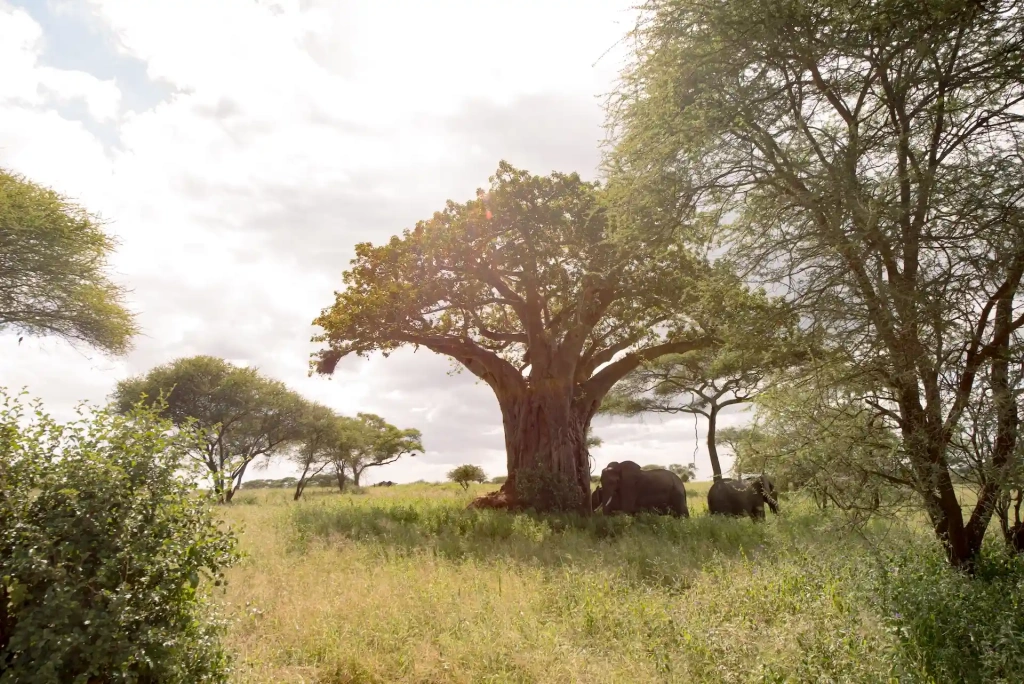
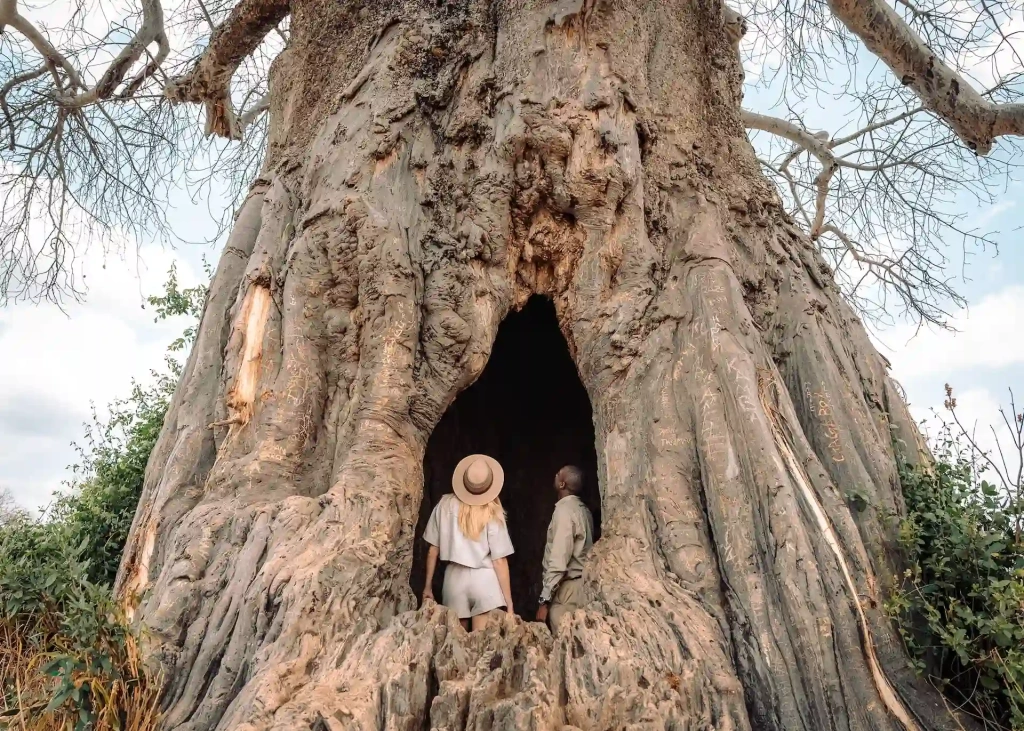
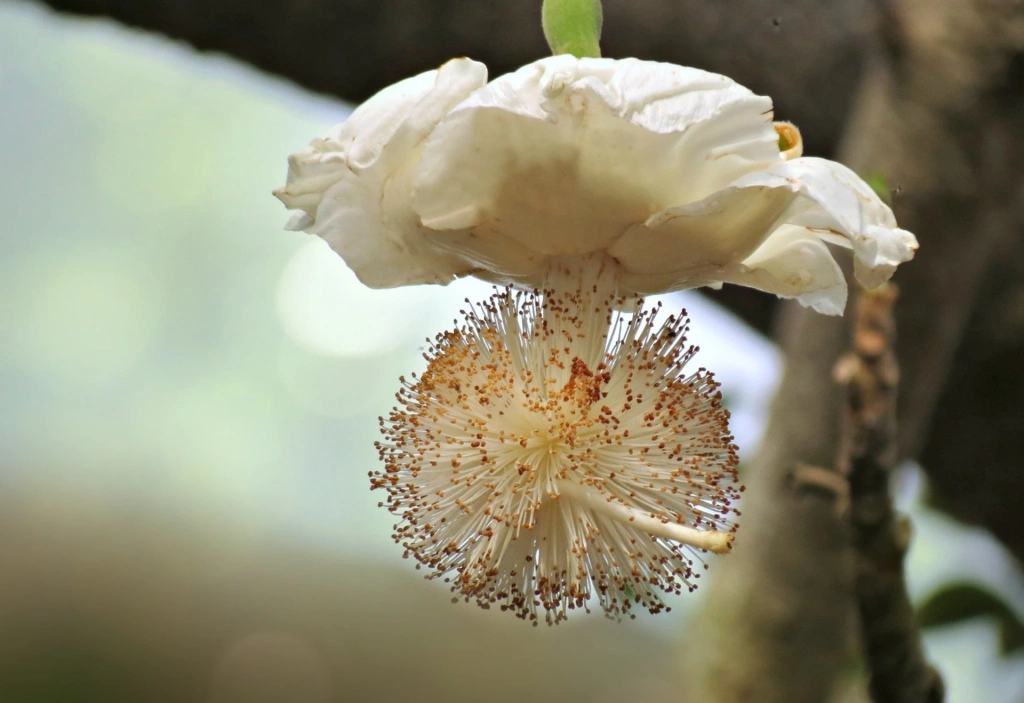
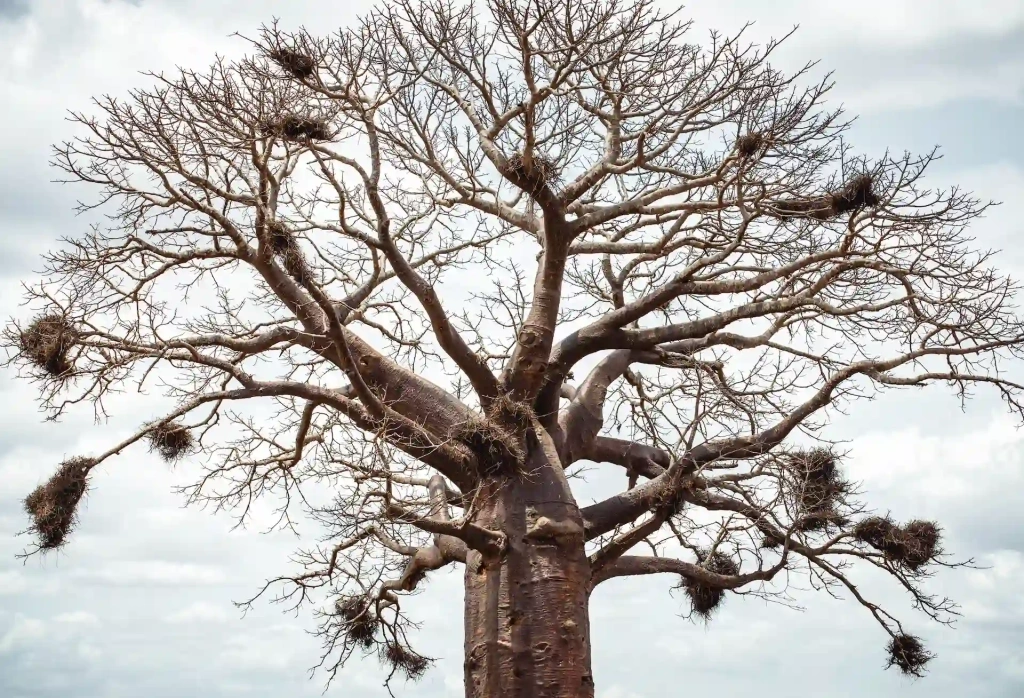
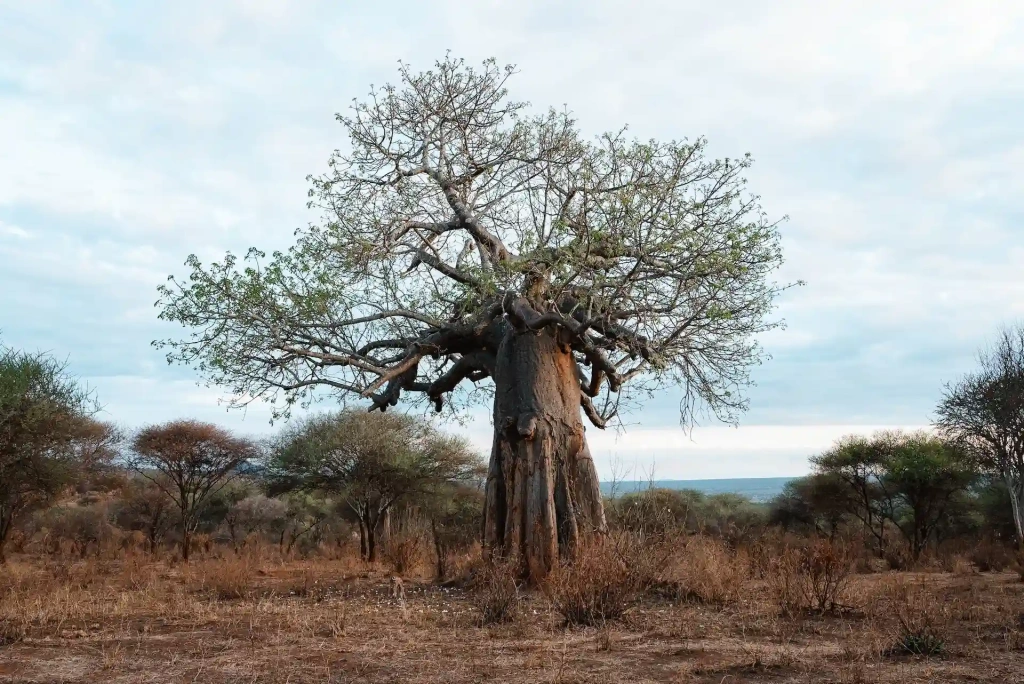
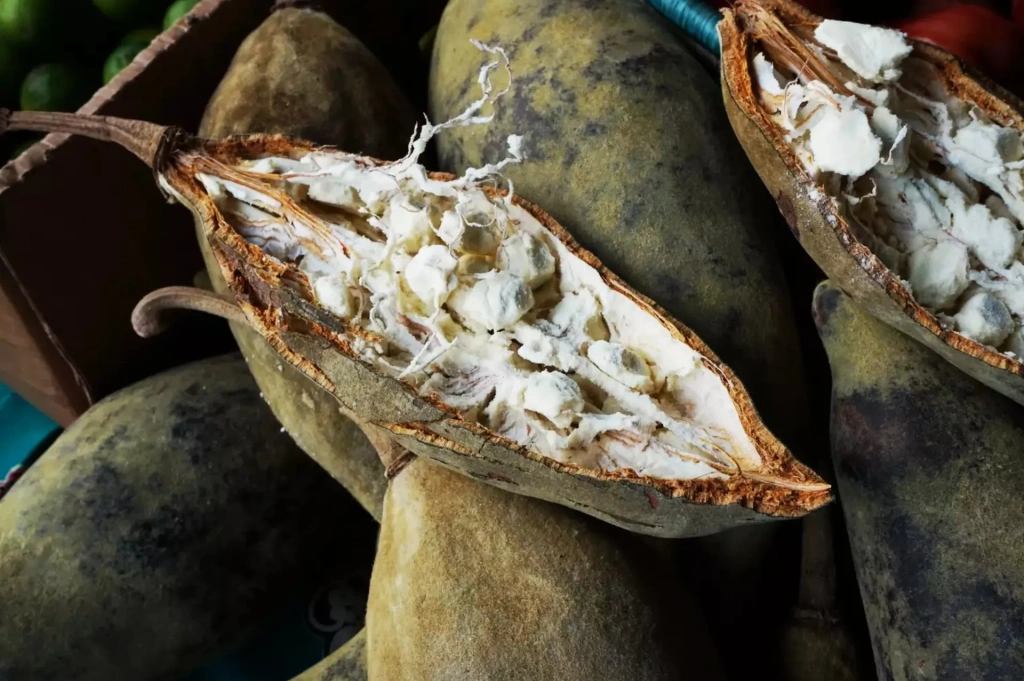
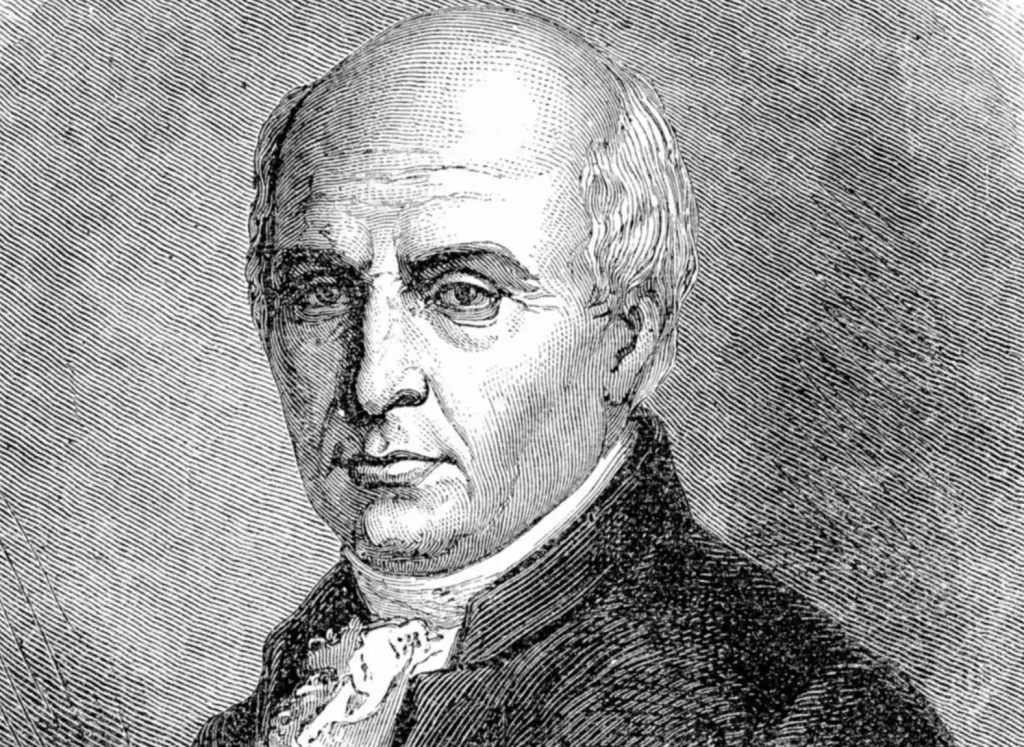
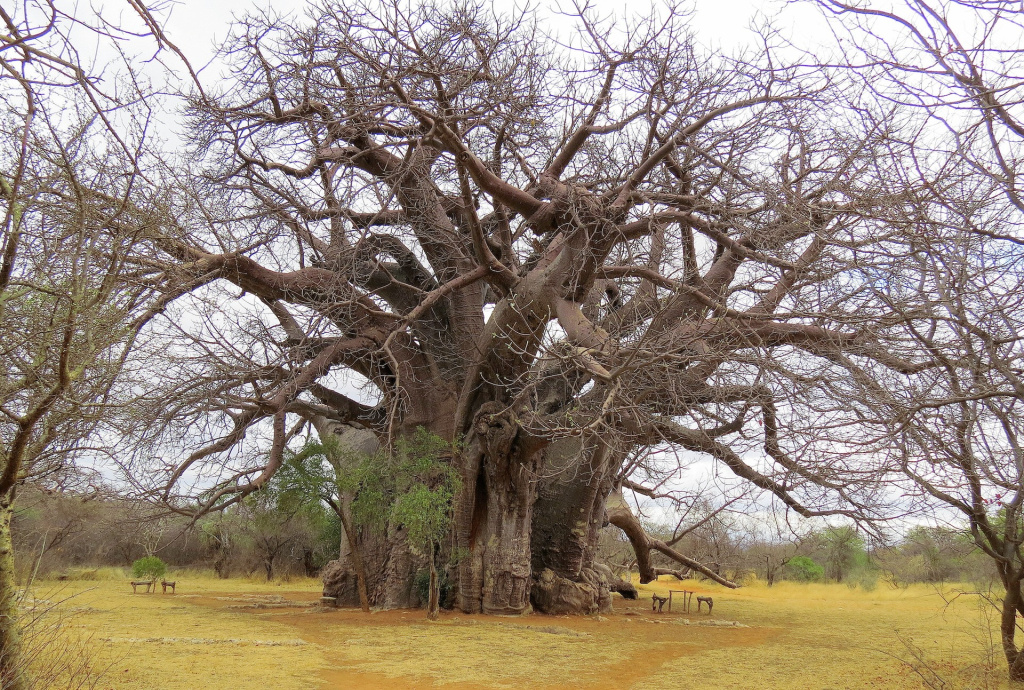
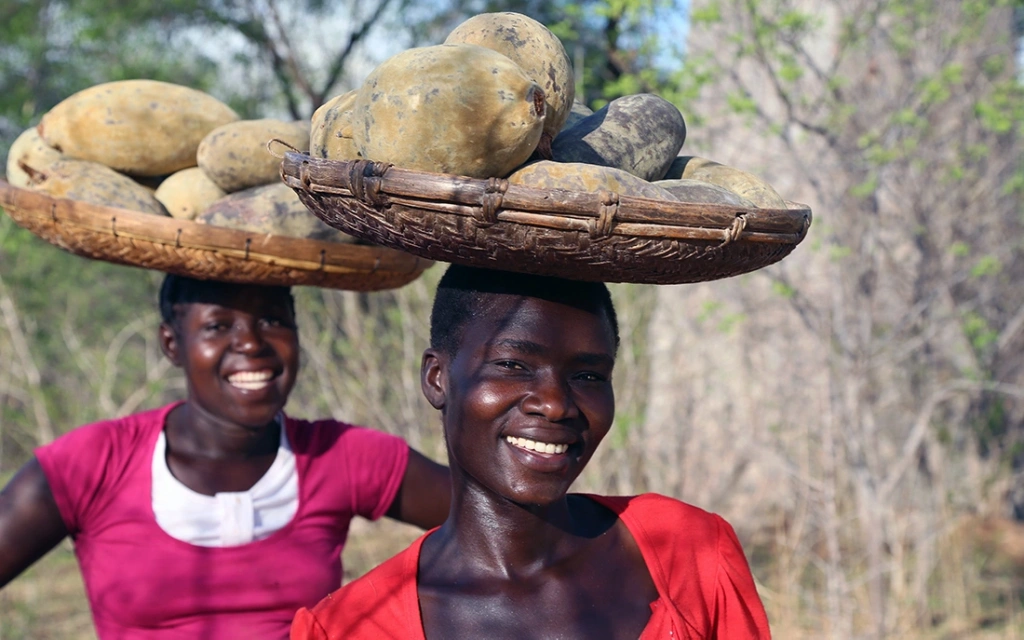
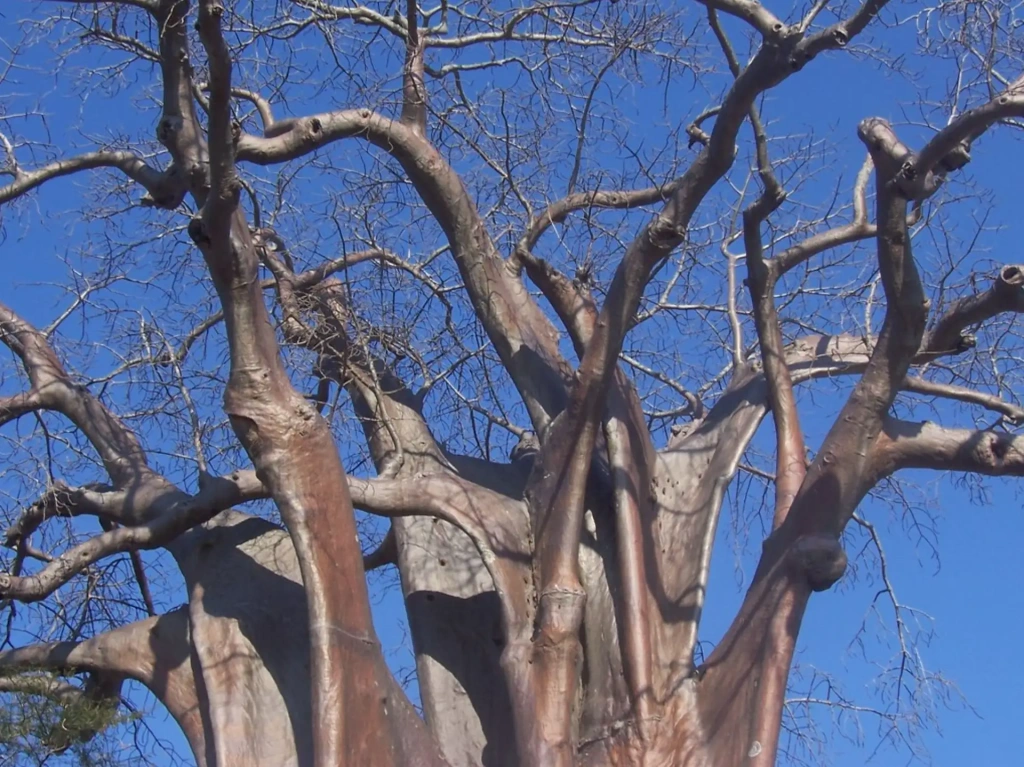

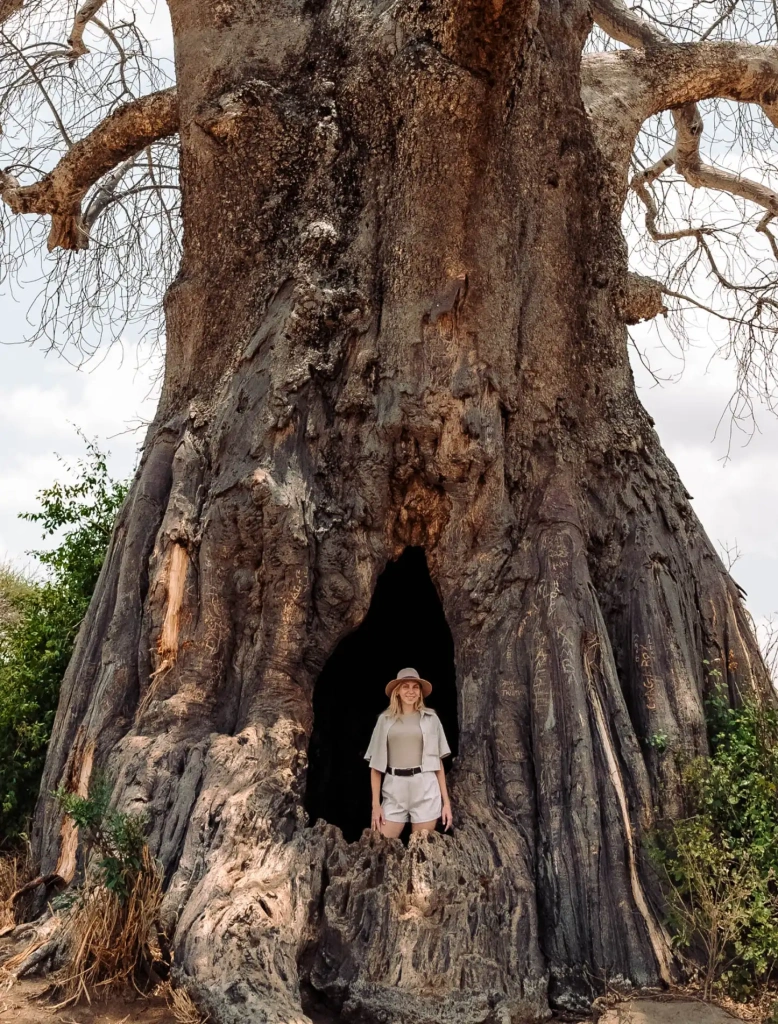
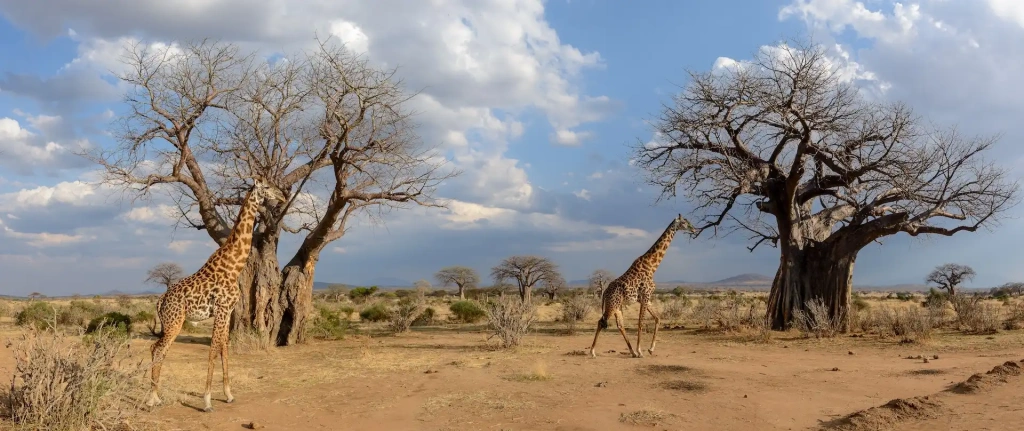

Interesting point! Elephants can sometimes strip the bark to reach the juicy wood beneath, which may harm individual trees. Still, they also play a role in dispersing baobab seeds — so it’s a complex relationship that helps maintain the ecosystem.